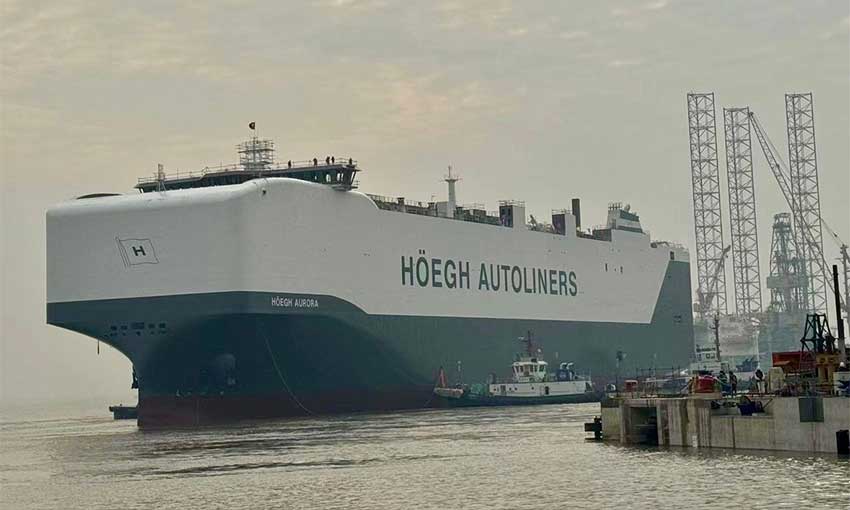FOUR companies have agreed to work together to design an ammonia dual-fuelled containership for MSC.
Lloyd’s Register, MSC, Shanghai Merchant Ship Design & Research Institute (SDARI) and Germany’s MAN Energy Solutions will collaborate under a memorandum of understanding.
The project involves developing technical specifications and design documents for a variant of SDARI’s “twin island” 8200 TEU containership design.
MSC would therefore have the option to adopt ammonia as a zero-carbon main propulsion fuel for future newbuild contracts.
“Proactive collaboration between ship operators, ship designers, class and engine makers has never been so important,” MSC head of newbuilding Giuseppe Gargiulo said.
“MSC is pleased to enter in this project to evaluate if zero carbon fuels like ammonia can be safely adopted and the impact they will have on vessel operation.”
Lloyd’s Register CEO Nick Brown said the classification society was delighted to join the project.
“The application of ammonia as a marine fuel for the container ship sector will be crucial for our industry to achieve the emission reduction targets set by the IMO and this cross-supply chain collaboration marks a vital step in the maritime industry’s energy transition,” he said.
As part of the project, SDARI has been tasked with preparing the specification and design documentation of the ammonia dual-fuel variant, while LR is to verify that the design conforms with safety standards and rules relating to the usage of ammonia as a marine fuel.
MAN Energy Solutions will deliver data for the engine design and ammonia fuel supply and emission abatement systems.
“Projects like this are vital for helping us evaluate the risks and opportunities of using ammonia for propulsion and for sharing these learnings across the maritime supply chain,” SDARI CTO Wang Gangyi said.
And MAN Energy Solutions’ head of 2-stroke Bjarne Foldager said all alternative fuels need to be considered to meet decarbonisation objectives on time.
“Being part of this MoU with MSC, SDARI and LR aligns with our strategic purpose, to provide decarbonisation solutions for our trusted partners and it solidifies the industry commitment to reduce emissions.”





